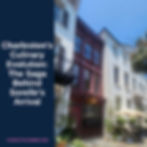
There was a time—not long ago—when a Washington, D.C. power lunch wasn’t complete without three things: a martini, a cigarette, and a well-placed ashtray. Before smoking bans and the tyranny of smartphones, restaurants were more than dining rooms; they were theaters of ritual and influence. Deals were whispered over cigarettes, crises averted with a stiff drink, and, for reasons that now seem absurd, ashtrays were bolted into bathroom stalls.
Capitol Hill’s Time Capsules
While most of the city has traded smoke-filled rooms for sleek wellness menus and oat milk lattes, a few Capitol Hill institutions still carry the faint scent of another age. Step inside one such haunt and you’ll find the ghosts of mid-century politics: wood-paneled walls, a lonely telephone booth by the entrance, and yes—an ashtray screwed into the side of a bathroom stall.
These details aren’t just curiosities. They’re stage props from a time when a restroom break could mean lighting up, collecting your thoughts, or continuing a heated debate without skipping a drag.
The Rise and Fall of the Bathroom Ashtray

For decades, the stall-side ashtray was as common as a coat check or a linen napkin. By the late 1980s and ’90s, smoking bans swept across the country. The Clean Indoor Air Act and its successors banished cigarettes from the indoors and rendered restroom ashtrays not just outdated but unthinkable. By the 2000s, they had disappeared almost entirely—joining the ranks of other extinct restaurant amenities like matchbooks, maître d’ podiums stacked with bribes, and unspoken “three-martini” workdays.
The Martini Lunch and Its Forgotten Accoutrements
The martini lunch was more than an indulgence—it was a civic ritual. Politicians, ad men, and lobbyists ducked into steakhouses and hotel bars, stretching “lunch hour” into entire afternoons. Cigarettes and cigars were as much a part of the table setting as bread baskets.
And then there were the telephone booths—dim, discreet, and essential. In pre-cell-phone Washington, a well-timed call from a booth could shift a legislative vote or close a corporate merger. Swap the rotary phone for a burner, and you’ve got a set piece fit for today’s political dramas.
Relics in Plain Sight
Most restaurants have shed these ghosts, but in Washington, a handful still preserve the atmosphere. That forgotten ashtray, that lonely phone booth—they remind us that the tools of influence were once tangible. You flicked ashes between paragraphs, closed deals between drags, and dialed decisions from a booth by the bar.
If yesterday’s ashtrays could be repurposed today, they’d likely fill with discarded talking points or the ashes of campaign promises. The booths? Perfect spots to upload leaks under the glow of stained glass and brass fixtures.
The Cultural Shift—and What We’ve Lost
In 2025, the idea of smoking in a bathroom stall sounds absurd, even comic. But these relics weren’t just about nicotine—they were symbols of a slower, stranger political rhythm. Lunches stretched. Conversations lingered. The performance of power unfolded not on Slack or X (formerly Twitter), but through smoke, glass, and whispered favors.
And yet, politics hasn’t really changed—it’s just swapped props. Yesterday’s ashtrays are today’s encrypted text chains. Yesterday’s smoke-filled rooms are today’s Zoom backchannels. The theater remains; the scenery has been updated.
Why These Relics Still Matter
As D.C. restaurants embrace polished modernity, the few that cling to their ashtrays and phone booths stand as living monuments. They remind us of a different Washington—messier, smokier, and maybe more honest about the vices that powered it.
So the next time you stumble across a bathroom ashtray in a Capitol Hill restaurant, don’t dismiss it as junk. Consider it a museum piece in plain sight—a reminder that history doesn’t always sit behind glass. Sometimes it lingers on the wall of a bathroom stall, waiting for the next chapter in Washington’s long-running political satire.











